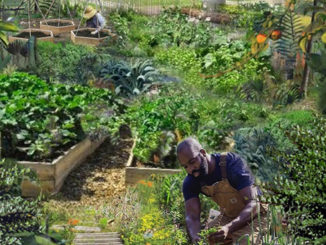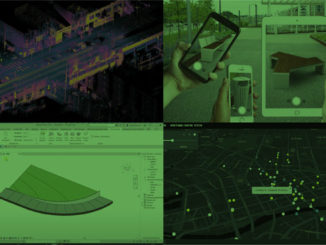Winner – Award of Excellence in the 2020 WLA Awards for the Student – Design category
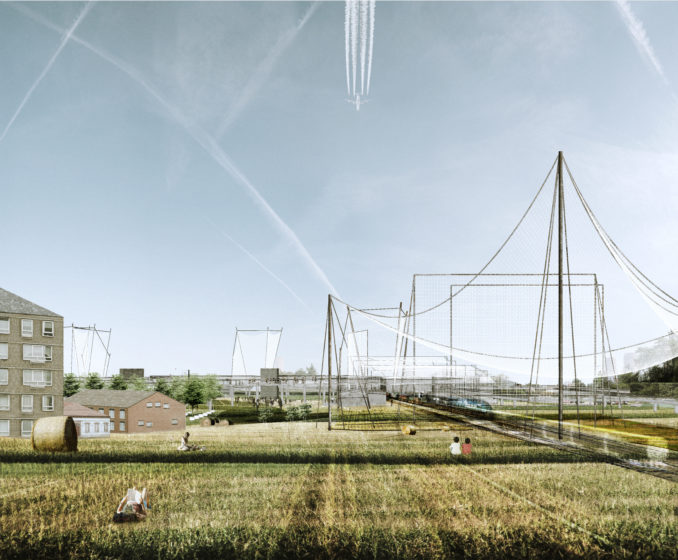
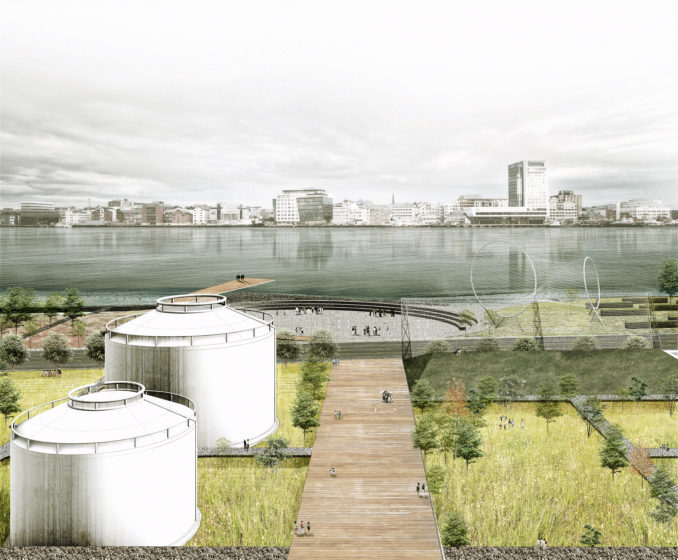
Dissolving Boundaries: From “Pollution Sinks” to “Productive Urban Landscapes” explores comprehensives strategies that target different forms of contamination and the extreme compartmentalization that industry and infrastructure have brought to the area. The site is in East Boston, which has been characterized as a highly contaminated region for a long time. The transportation infrastructures and industrial facilities area causing severe pollution as well as urban boundaries between adjacent parcels. In the meantime, the site is also suffering from the air pollution that comes from the nearby Boston Logan International airport. The airline routes in this area are largely overlapping with the train line on the ground. Under the circumstances, the existing urban boundaries become “Pollution Sinks,” where high concentrated contaminations are accumulated.
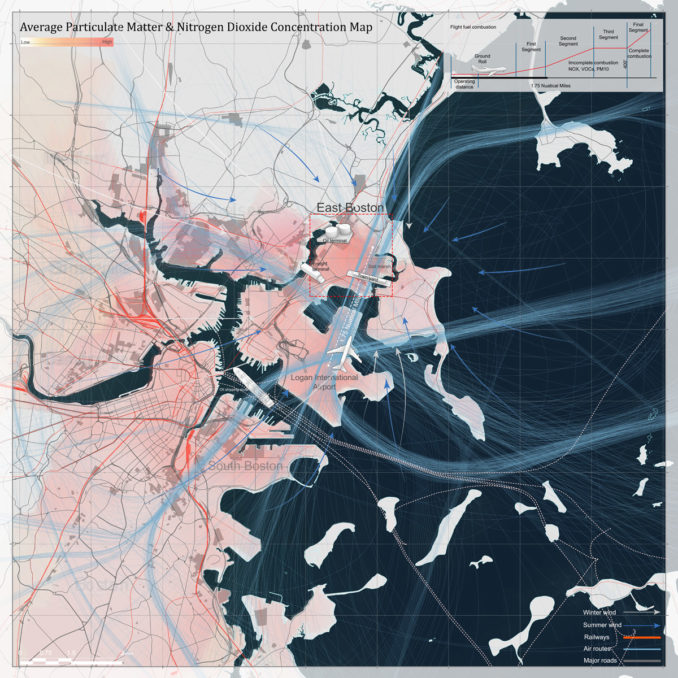

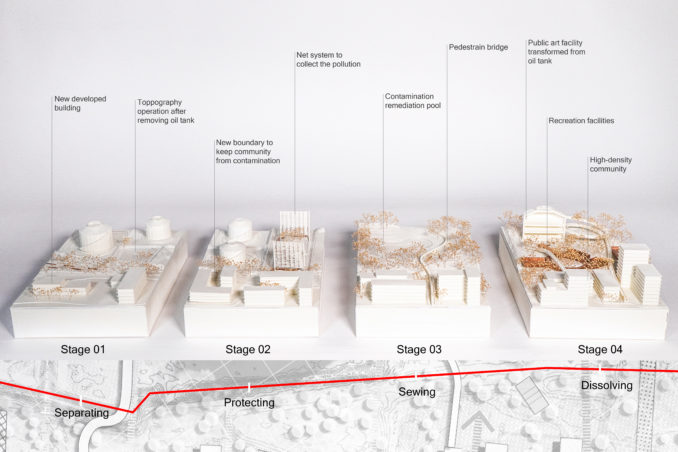
The proposal of the project typifies a set of different urban boundary conditions. By editing topography, vegetation, pedestrian circulation and using new technological infrastructures, the boundaries are transforming into areas of urban interaction and pollution digestible landscapes. East Boston locates in the northeast of Logan International Airport, a place full of linear transportation system and oil infrastructure facilities, separating this district into shattered parcels. What makes the condition worse is that everyday hundreds of planes will fly over this area along one limited air passage. They keep producing tons of air pollution including nitrogen dioxide to along that passage due to insufficient combustion. Coupled with highway and railway in the same direction, that aerial linear border has made spatial boundary into a pollution producer threatening local public health. The potential harm related with urban boundaries leads us to deploy our design intervention from an urban landscape perspective. People always ignore the pollution occurring in the zone where plane just takes off but still doesn’t arrive to an enough environmental-friendly height. How could we rise their perception about environmental justice? Transportation and industry produce spatial boundary, separating local community and natural reservation. How could we transfer those boundaries into an active zone? What we are trying to do is to redefine the boundary to better understand its characters and potentials to be remediated or strengthened, to see what transition would happen to the surrounding area of the boundaries and spatially how boundaries could contribute to urban growth.
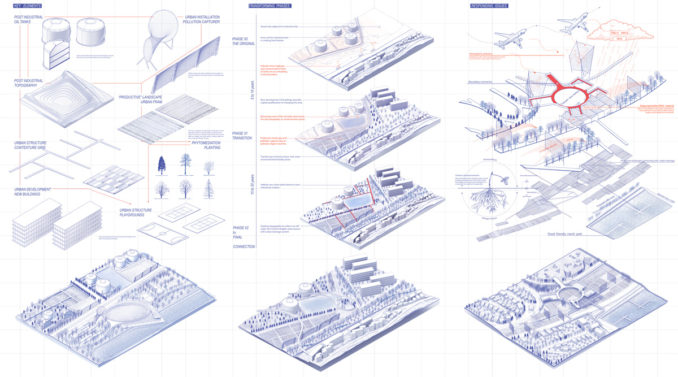
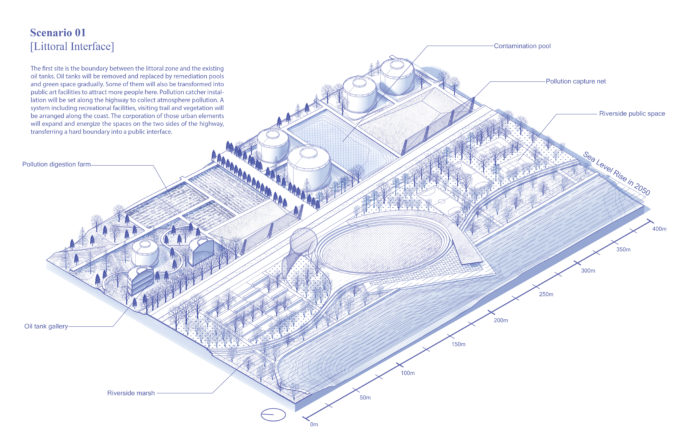
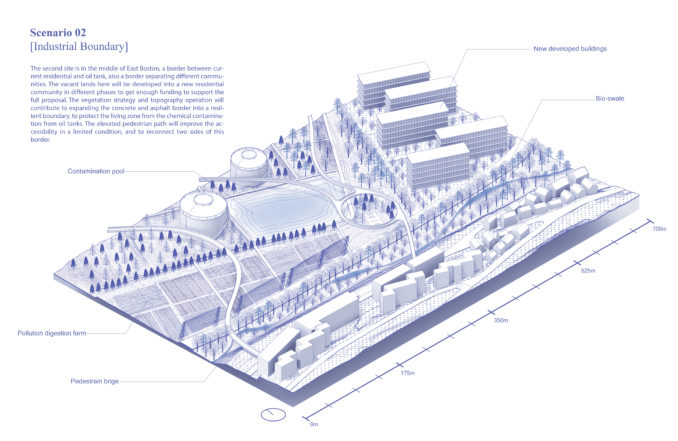
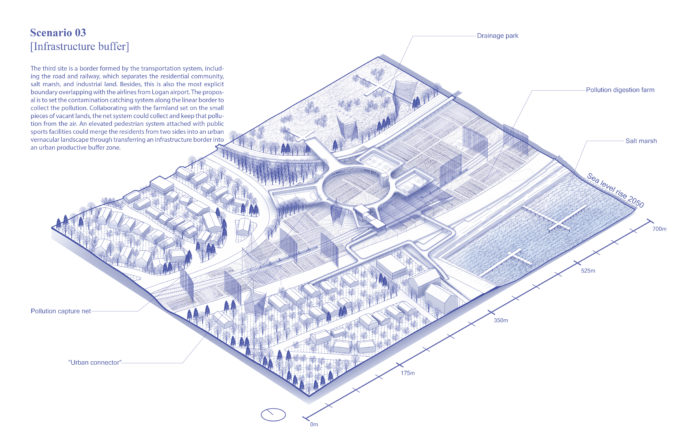
Dissolving Boundaries: From “Pollution Sinks” to “Productive Urban Landscapes”
Students: Siwen Xie, Xiuzheng Li, Xin Zhong – Harvard University GSD
Instructor: Pablo Pérez-Ramos
Photography and Image credits:
Google Maps https://www.google.com/maps, Mass government https://www.mass.gov/get-a-map, Climate ready Boston https://www.boston.gov/departments/environment/climate-ready-boston-map-explorer, Siwen Xie, Xiuzheng Li


